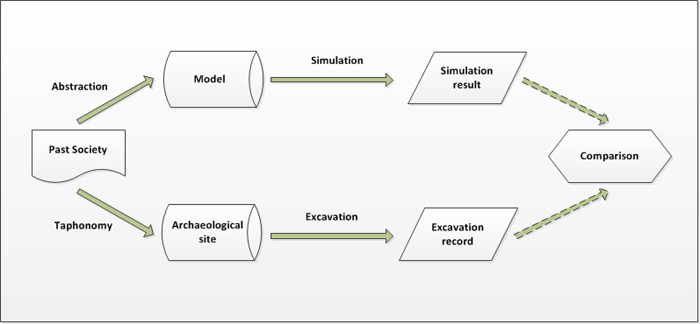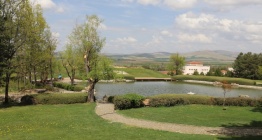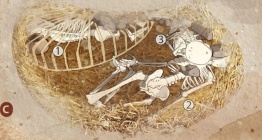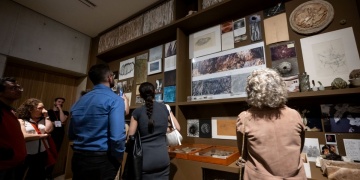Using computer simulations to discover where Neanderthals lived. Archaeologist Fulco Sherjon has used computer simulations to identify where and how Neanderthals lived in West Europe. What stood out was that they probably had lots of children and lived in smaller groups than was previously thought. Ph.D. defense on 28 May.
The Neanderthals lived in Europe and Asia some 400,000 to 40,000 years ago. Many questions remain about this extinct human species, which lived at the same time as early modern humans.
In which areas did they live, for instance? And how did they live? HomininSpace, the computer program that archaeologist Fulco Sherjon developed, gives some pointers. He got the program to look at whether the Neanderthals lived in England. "We know they were there in some periods, but not whether they were there in others. The conclusion was that it is unlikely that they were not in England in those periods," he explains. In other words: it is highly likely that they were there in those periods too.
There are other Neanderthal simulation programs, but...

Scherjon entered the data from 83 Neanderthal sites in West Europe into Homininspace, together with 470 exact datings of a Neanderthal presence. The simulation area was mainly in France because this is where most of the finds have been made. The system compared this information with the simulation results. The program carried out about 40,000 simulations, simulating almost 3.3 billion Neanderthal years. There are other Neanderthal simulation programs, but what makes HomininSpace unique is that it looks for the model that produces the best matches, Scherjon explains. "The program uses this to produce the most probable answer. Rather than say: "this is what the Neanderthals were like" it says: "it's probable that the Neanderthals were here at that time or lived like this."'
According to my model, a birth rate of 40 percent is probable.
What the simulation results also suggest is that in the span of their relatively short lives, the Neanderthals probably had plenty of offspring. "According to my model, a birth rate of 40 percent is probable. That means 40 percent of the women have a baby in one year. That is quite high. To investigate this in more detail, you could look at whether this figure is consistent with other archaeological data. Certain lines on the teeth show moments of stress, for instance. If a woman has had six children, and thus experienced labor pain six times, you may be able to see this on her teeth."
Such groups probably consisted of about two to three adult women,
It also looked likely that the Neanderthals moved around in relatively small groups. "The literature talks about groups of about 25 in size," Scherjon explains, "but the simulations suggest that a figure of between 10 and 12 people is more likely. Such groups probably consisted of about two to three adult women, two to three adult men and a few children. This is surprising because such small groups are vulnerable."
Other researchers
Scherjon now wants to make HomininSpace available to others. "The program is generic in design, so you can also use it to analyze hominids or top predators—animals at the top of the food chain. We are going to publish Homininspace open access, via the University and OpenABM, a website where you can share academic models. I definitely hope that other researchers will use it."
Source: Leiden University [May 23, 2019]








 Manisa Mesir Macunu Festivali, 23 Nisan'da başlayacak macun saçımı 28 Nisan'da
Manisa Mesir Macunu Festivali, 23 Nisan'da başlayacak macun saçımı 28 Nisan'da  Namık Kemal'in mezarı ve Gazi Süleyman Paşa Türbesinde restorasyon sürüyor
Namık Kemal'in mezarı ve Gazi Süleyman Paşa Türbesinde restorasyon sürüyor  Roma dönemine ait 3500 yıllık sütunlu cadde mi keşfedildi, güldürmeyin insanı!
Roma dönemine ait 3500 yıllık sütunlu cadde mi keşfedildi, güldürmeyin insanı!  Merhum seramik Sanatçısı Melike Abasıyanık Kurtiç'in eserleri Bir Denizkestanesinin Anıları'nda
Merhum seramik Sanatçısı Melike Abasıyanık Kurtiç'in eserleri Bir Denizkestanesinin Anıları'nda 




